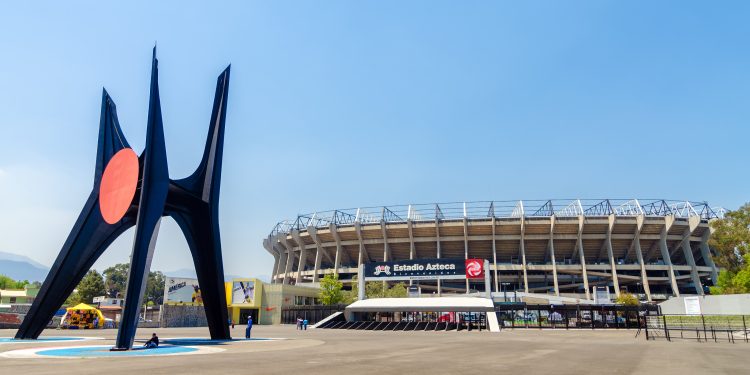Mexicans are passionate about their national sport. Surveys suggest that over 70% of Mexicans between the ages of 12 and 60 regularly watch soccer games on TV, making the sport a frequent topic of conversation here. With this in mind, here’s a primer on how the Mexican professional soccer leagues play-out through the year.
Many local matches are shown on free-to-view broadcast channels, which include those of Televisa, TV Azteca and Imagen TV. But in recent years, a growing number of games are only available on cable or satellite TV systems—primarily Fox and ESPN. Televisa also shows selected games only on its cable or streaming channel.
Likewise, if you want to watch teams like Real Madrid, Barcelona or Manchester United —to name a few— you’ll need to have a cable or satellite television subscription.
Mexico’s two annual soccer tournaments
The Mexican professional league has several divisions, although the focus is almost entirely on the first division, officially known as Liga MX, which currently has 18 teams. As in some South American countries, Mexico holds two championships a year:
- Apertura or opening competition that runs from August to December; and
- Clausura or closing which starts in January and ends in May.
Each tournament is decided by playoffs. The top four finishers enter the quarter finals directly, while the fifth to 12th teams play off in a single match to determine the other four spots.
The fifth placed team plays the 12th, the sixth plays the 11th, and so on, with the higher-placed team having the home ground advantage. That determines liguilla or little league, with quarter finals, semi-finals, and a final played over two matches—each team playing one of the games at home. game is drawn, it goes straight to a penalty shootout.
In the quarters and semis, the highest placed teams are matched with the lowest finishers in the regular season, i.e., 1-vs-8, 2-vs-7, 3-vs-6 and 4-vs-5.
Methods for breaking a tie in each of the rounds have varied over the years with changes made every once in a while depending, it would appear, on the mood of soccer authorities.
At present, the tie-breaking criterion for the quarter and semifinals is the team that finished higher in the league. This rule is set aside in the final, when a tie after two matches leads to extra time, and then a series of penalty kicks.
The tension and excitement tends to increase as the playoffs approach the final rounds of each tournament during December and May, respectively.
Promotion and relegation on hold
As in some other countries, Mexico refers to its lower divisions somewhat euphemistically—the second division here was known as Ascenso, meaning ascent or promotion.
But because of financial difficulties faced by Ascenso teams, exacerbated by the Coronavirus event, the Mexican professional soccer league decided in April 2020 to cancel promotion and relegation to and from the first division for at least five seasons. The Ascenso league became the Expansión league. A euphemism for the euphemism.
There has been talk of resuming promotion and relegation beginning in 2024. Relegation would be determined by the top flight teams’ performance over four tournaments—two years, which would still help the bigger teams to avoid relegation after a “freak” bad season.
Some of Mexico’s popular soccer teams
Here’s a summary of the most popular professional soccer teams in Mexico:
Club América, nicknamed Águilas
Like the N.Y. Yankees of old, this is the team you either support or detest. There is no middle ground. América plays at the Aztec Stadium in southern Mexico City, along with Cruz Azul.
Guadalajara, nicknamed Chivas
This team is known for only fielding Mexican players. Some people find that rule strange in these days when soccer players commonly play outside their own countries. Chivas rivals América for number of supporters. Many are from Mexico City, just as many América fans can be found in Guadalajara.
Universidad, UNAM, or Pumas
The National Autonomous University of Mexico team is based in Mexico City and Las Pumas play at the Olympic Stadium situated on the UNAM campus. The team is known for its soccer teaching, and being the source of many promising young Mexican players.
Pachuca, or Tuzos
Pachuca is Mexico’s oldest professional football team, as the sport was introduced into Mexico by Cornish miners in Hidalgo State in the late 19th century. Tuzo is the nickname for miners, a reference to the tuza, or gopher, a mole-like burrowing rodent.
Monterrey, or Rayados
Rayados, the striped ones, is one of two first division sides in the northern industrial hub of Monterrey.
Universidad Autónoma de Nuevo León
Better known as Tigres, this soccer team has been highly successful in recent years. The Monterrey derby —Tigres vs Rayados— is among the unquestioned clásicos of Mexican soccer, the other being América vs Chivas.
Cruz Azul
A Mexico City side owned by the cement company of the same name. The team’s heyday was in the 1970s, and in more recent years it has become famous (or infamous depending who you support) for its number of second-place finishes.
Toluca, or Diablos
This team from the city of Toluca, situated in the mountains west of Mexico City and nicknamed Los Diablos or the Devils, have been one of Mexico’s most consistently successful teams in the Mexican soccer league.
Santos of Torreón.
Santos is both the team’s name and nickname, and aside from the Monterrey clubs has been the most consistent and successful of teams from northern Mexico.
While these teams mentioned above are probably the best known, Mexico’s league is quite competitive and it isn’t that unusual for others to surprise. Tijuana, León, and Querétaro have all either won a championship or come fairly close to it. Others are Puebla and Atlas—another team from Guadalajara.
A final note about the Spanish word ‘Futbol’
In South America football is pronounced futbol and spelled with an accent on the “u” — fútbol. In Mexico (and Central America) it’s pronounced futbol and therefore has no accent. Both are correct, says the Spanish Royal Academy.
Tables, fixtures, and results for the Mexican league can be found online at: https://ligamx.net
Learn more about sports and leisure in Mexico
Connect to more articles for insights and sports and other leisure pastimes.






